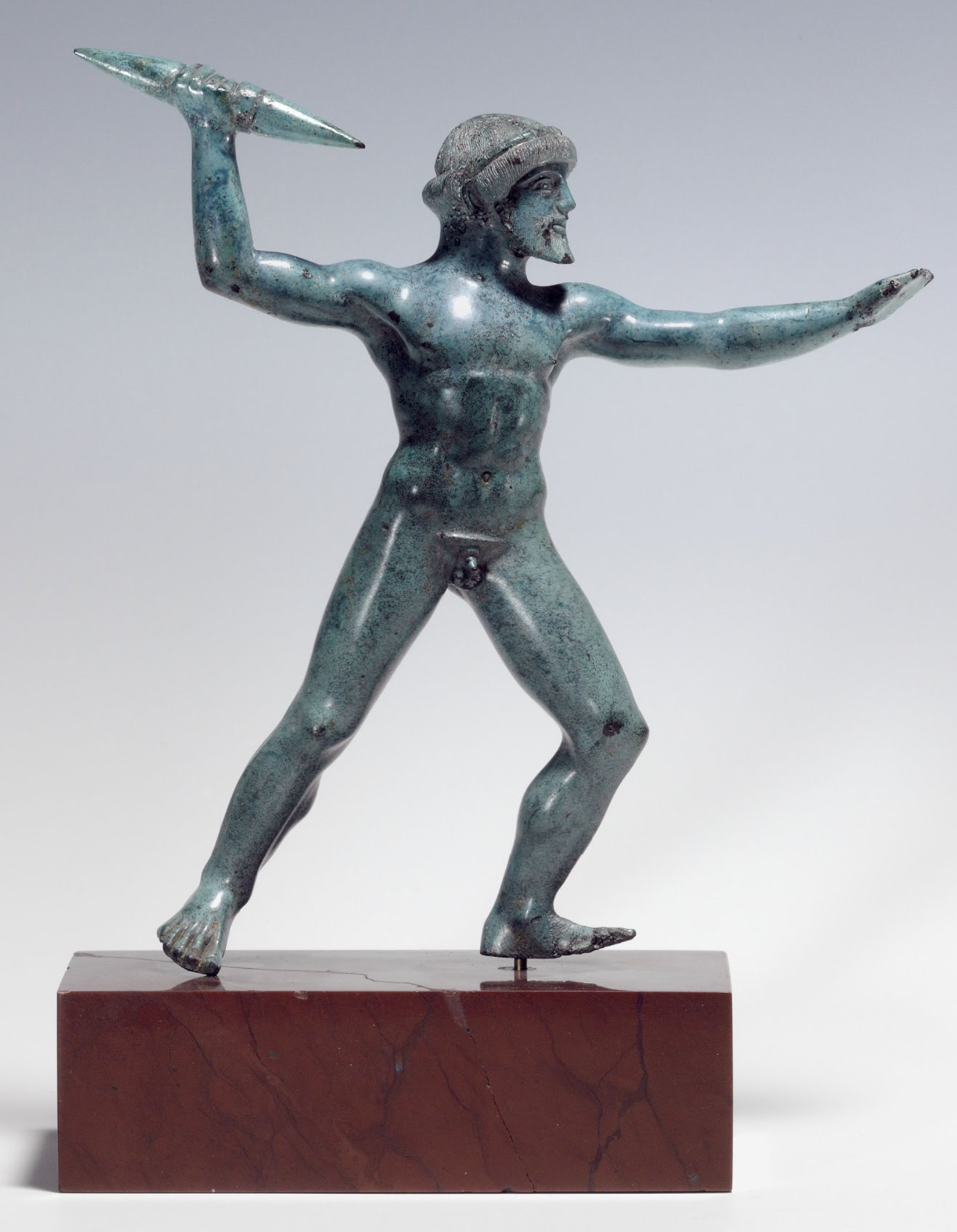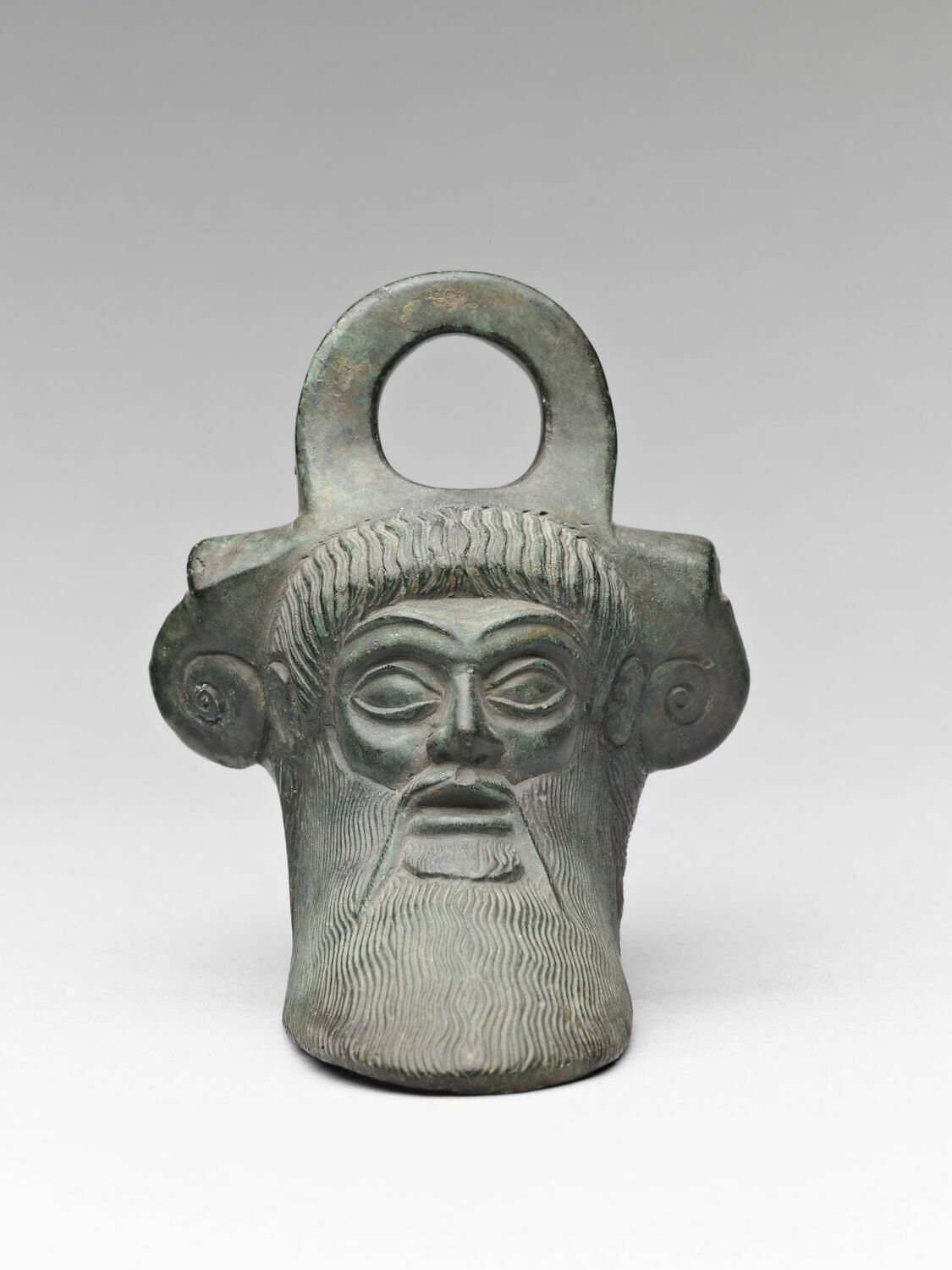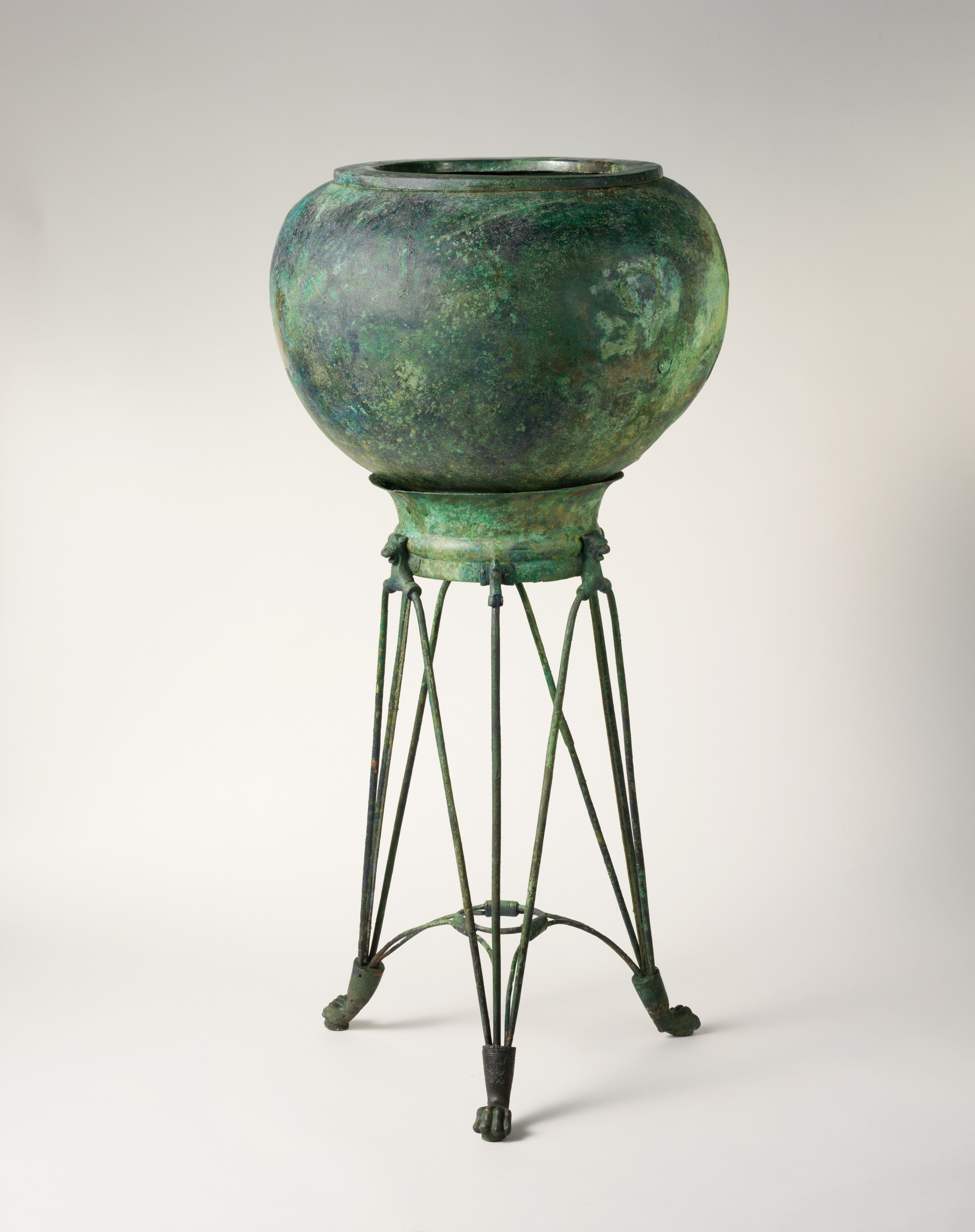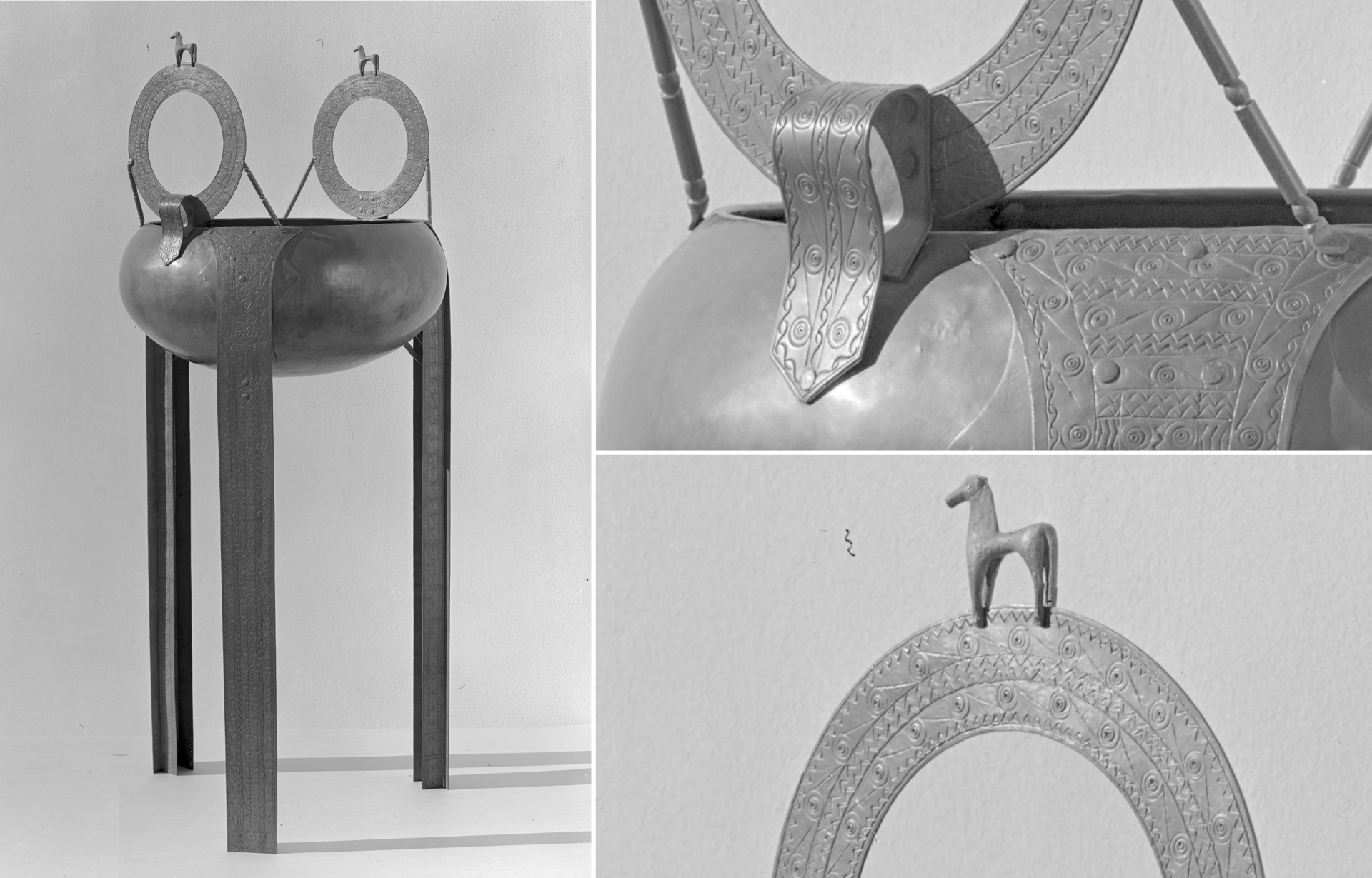Historical Resources
Dedications at Dodona
Excavations at Dodona have unearthed a wealth of dedications made by pilgrims to the sanctuary, from the Archaic period onwards. Even the famed Lydian king Croesus, according to Herodotus (Histories 1.46-1.54), made dedications at Dodona, as part of his test of ancient oracles.
The dedications paint a rich portrait of the geographical and social diversity of visitors to Dodona. These include bronze statuettes of Zeus and the other Greek gods, which may have been made and sold locally, as well as a range of ceramics, jewellery, bronze tools and weaponry, bronze figurines of warriors and athletes, and bronze vessels. In later years, more elaborate dedications were made at the site, including honorific statues.

© Verlag Philipp von Zabern / Antikensammlung, Staatliche Museen zu Berlin / Ulrich Gehrig || Photo: © b p k - || Photo Agency / Antikensammlung, Staatliche Museen zu Berlin / Johannes Laurentius.
Of particular note from the period is a decorative piece from the rim of a large bronze jug, in the form of ram-horned head of Zeus Ammon, who presided over an oracle at Siwa in Egypt. Herodotus tells the story of the foundation of the oracles of Dodona and of Zeus Ammon, describing how two black doves flew from Thebes in Egypt, one to Libya and one to Dodona. The piece dates to c. 450BCE and helped to inspire our depiction of the VRO’s character Iolaos, who mentions his visits to that sanctuary.

© 2009 RMN-Grand Palais (Louvre Museum) / Hervé Lewandowski
Many tripod cauldrons were dedicated at Dodona; they may have been used to distinguish particular areas of the site before it became more built up in the 3rd century BCE. The late fourth-century BCE author, Demon, describes how tripods were set up like walls, so near to each other that if you touched one of them, it set up a vibration across all of them. Later writers suggested this was part of the divinatory process. Both aspects of Dodona’s tripod cauldrons are explored in the VRO, where they demarcate the sacred precinct (temenos), circle Zeus’ oak tree, and sound during the oracular consultations.
Other authors highlight one particularly noisy bronze dedication: Strabo (Geography 7.7 Fragment 3) describes a ‘copper vessel with a statue of a man situated above it and holding a copper whip, dedicated by the Corcyraeans.’ This vessel, so the story goes, produced a sustained sound; it gave rise to an expression ‘the Dodona bronze’ that was used to describe chatterboxes.

Gift of Estate of Jacob Hirsch, in memory of Dr. and Mrs. Jacob Hirsch, 1955. The Metropolitan Museum of Art (metmuseum.org).

Before the sanctuary was built up, we do not know where many of the dedications were placed. Some may have been gathered around tripods, clustered along the sacred way, or placed near the oak tree. In later years, they may have been deposited in treasuries along the sacred way, or placed in the Sacred House.
Dedications were, as Folkert van Straten has argued, ‘something to be enjoyed, something beautiful, an ornament for the sanctuary’ (Straten 1990). They formed a sacred, deeply personal link between the dedicant and the divine. At Dodona, this is illustrated by a distinctive type of dedication, namely the lead tablets on which pilgrims inscribed their questions to the gods.
References
- Bosman, P. 2016. ‘The “Dodona Bronze” Revisited’. Acta Classica, 59, 184-192.
- Eidinow, E. 2007. Oracles, Curses, and Risk Among the Ancient Greeks. Oxford: Oxford University Press.
- Fotiadi, M. 2018. Dedications at ancient Dodona. University of Birmingham. M.A.
- Parke, H.W. 1967. The Oracles of Zeus: Dodona, Olympia, Ammon. Oxford: Blackwell.
- Piccinini, J. 2016. ‘Renaissance or Decline? The Shrine of Dodona in the Hellenistic Period’, in Hellenistic Sanctuaries: Between Greece and Rome, edited by M. Melfi and O. Bobou, 152-169. Oxford: Oxford University Press.
- van Straten, F. 1990. ‘Votives and votaries in Greek sanctuaries’, in Le sanctuaire grec, edited by O. Reverdin and P. Grange, 247–290. Geneva: Vandoeuvres.